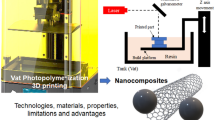Abstract
Automated control systems employ electronic components that are connected with a printed circuit board (PCB) by soldered joints. At elevated temperatures and with high vibration levels, soldering defects may occur that are characterized by the deterioration or complete loss of contact with the PCB, which can lead to the failure of the system. In this work, an approach is proposed to considerably improve the reliability of soldered joints.
Similar content being viewed by others
References
Shcherbinin, V.E., Kostin, V.N., Smorodinskii, Ya.G., Nichipuruk, A.P., Rinkevich, A.B., Shleenkov, A.S., Patramanskii, B.V., and Loskutov, V.E., On necessary measures for ensuring safe operation of pipeline transport using nondestructive testing methods, Russ. J. Nondestr. Test., 2011, no. 12, pp. 842–851.
Gorkunov, E.S., Smirnov, S.V., and Rodionova, S.S., Effect of plastic deformation under hydrostatic pressure on damage and magnetic characteristics of 2SP low-carbon steel, Fizicheskaya mezomekhanika, 2003, vol. 6, no. 5, pp. 101–108.
Shcherbinin, V.E., Blinov, Yu.I., Shleenkov, A.S., Barmenkov, B.G., and Kostin, V.N., On development of national standards for magnetic and eddy-current nondestructive testing of steel pipes, Russ. J. Nondestr. Test., 2009, no. 10, pp. 740–742.
Budai, B.T., et al., Development of high-accuracy ecologically safe method for measuring the thickness of rolled sheets, Russ. J. Nondestr. Test., 2012, no. 8, pp. 483–487.
Lashko, N.F. and Lashko, S.V., Kontaktnye metallurgicheskie protsessy pri paike (Contact Metallurgical Processes in Soldering), Moscow: Metallurgiya, 1977.
Manko, G., Paika i pripoi (Soldering and Solders), Moscow: Mashinostroenie, 1968.
Khryapin, V.E., Spravochnik payal’shchika, 5th edition (Solderer’s Reference Book), Moscow: Mashinostroenie, 1981.
Kutateladze, S.S., Osnovy teorii teploobmena, 2nd edition (Fundamentals of Heat Transfer Theory), Moscow: Mashgiz, 1962.
Author information
Authors and Affiliations
Corresponding author
Additional information
Original Russian Text © V.N. Shtennikov, B.T. Budai, 2013, published in Defektoskopiya, 2013, Vol. 49, No. 3, pp. 65–71.
Rights and permissions
About this article
Cite this article
Shtennikov, V.N., Budai, B.T. The development of the physical fundamentals of contact soldering as a factor for reducing the number of defects in electronic devices. Russ J Nondestruct Test 49, 178–183 (2013). https://doi.org/10.1134/S1061830913030078
Received:
Published:
Issue Date:
DOI: https://doi.org/10.1134/S1061830913030078




